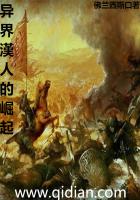(2.iii.42) 2. Let us suppose, that the capital is diminished, the labour not. This also is a caseof diminished cost of production. If, for the produce of 550 yards of cloth, which was at firsteffected by a capital of 400 yards and a portion of labour which was paid by a fifth of theproduce, only a capital of 200 yards should be required, but the same quantity of immediatelabour; that the labourers may have the same share as before, it is necessary that they shouldhave a greater aliquot part. Suppose, before that increase of productive power which is supposedin this case, when a capital of 400 yards was required for a produce of 550, and when the wagesof the quantity of labour applied was 110 yards, that another commodity had been produced bythe same quantity or labour, but by a capital of 200 yards. The value of this commodity wouldhave been 330 yards, equal to the capital with its profits and the wages. Of this the labourerswould have received 110 yards, or one-third. This is the same proportion to a capital of 200yards, as one-fifth is to a capital of 400 yards. If the labour contributed one-fifth to the productof 550 yards, when aided by a capital of 400 yards, it contributes one-third, in the newlysupposed case, when aided by a capital of 200 yards. One-third of 550 is 183 1/3; leaving to thecapitalist 366-2/3, or a profit upon his capital of 83-1/3 per cent. According to the explanation,which we have already given and repeated, there is here an additional produce to each, by reasonof the increase of productive power; and, also, which is only the same thing in other words, anaugmented value in exchange. But in Mr. Ricardo's sense of the word value, there is only thesame value to each, so long as the proportions remain unchanged.
(2.iii.43) The cases which I have thus put for illustration, are cases in which the productivepowers of labour and capital are augmented; but as the same reasonings apply, mutatis mutandis,to the cases in which the productive powers are diminished, it is deemed unnecessary to lengthenthis analysis by adducing them.
(2.iii.44) It may here be useful to the learner to look back, and ascertain the number andimportance of the steps which he has advanced. He has discovered, what are the laws, accordingto which those commodities, which form the riches of nations, are produced; and what are thelaws, according to which, when produced, they are distributed.
(2.iii.45) He has seen that there are two instruments of production; one primary, the othersecondary: that labour is the primary instrument of production, and that, abstracted from thoseaids which it derives from capital, its productive powers are augmented chiefly by limiting thenumber of each man's productive operations; in other words, by what has been called thedivision of labour: that capital is secondary to labour, not only because it is subsequent in orderof time, but because it owes its existence to labour; because the first capital is the result of purelabour, and because that which is subsequently the result of labour and capital combined, maythence be resolved into labour, the ultimate principle of all production.
(2.iii.46) The learner has now also seen, that, what is produced, by the operations of labourand capital, divides itself, in the first instance, into three portions; the rent of land; the wages oflabour; and the profits of stock. Till the laws were discovered, which determine the boundariesof these several portions, that which goes as rent, that which goes as profits, and that which goesas wages, almost all the conclusions of Political Economy were vague and uncertain. It has beenseen, that rent is something which may be considered independent of the general result or theproductive powers of labour and capital; that it is the result of a peculiar defect of the earth,which does not continue to yield its produce in equal abundance to successive portions ofcapital; and that it is the excess of what is yielded to the more productive portions, above what isequal to the produce of the least productive portion of capital employed upon the land. After thelimits were thus fixed of this one of the three portions, into which the produce of industrydivides itself, whence it appeared that what may be regarded as the genuine effect of labour andcapital in co-operation is left to be divided between the labourer and the capitalist; it was easyfor the learner to see, that, in respect to proportions, as what fell to the share of the one wasincreased, what went to the share of the other was diminished, and that in this sense, wages andprofits depend on one another; that in respect, however, to the quantity of produce which theseshares may contain, the productive power of the instruments of production is the determiningcause.















